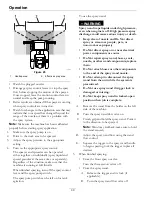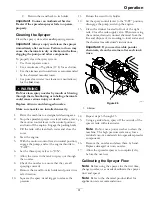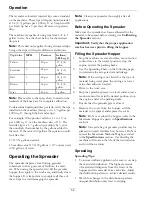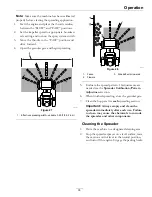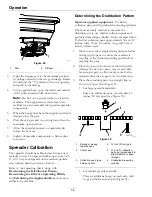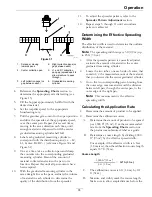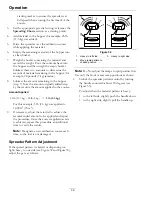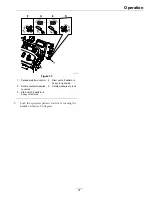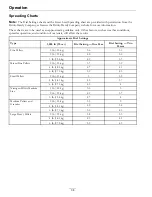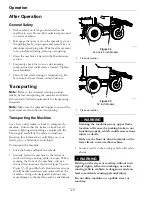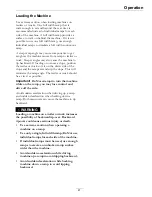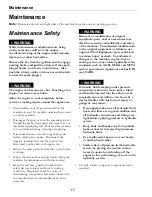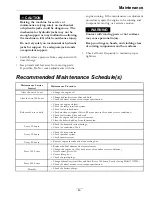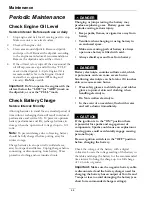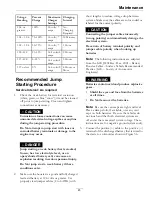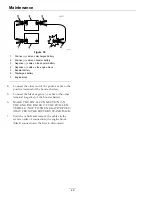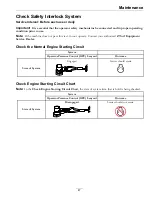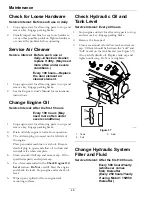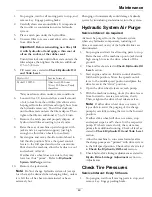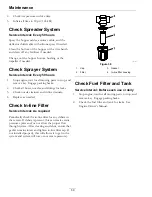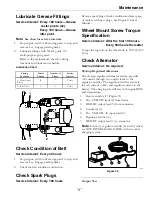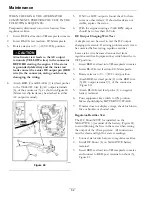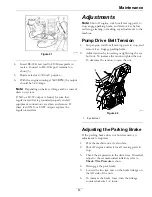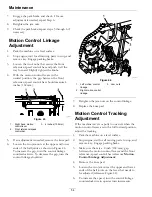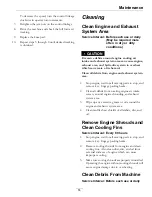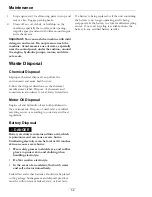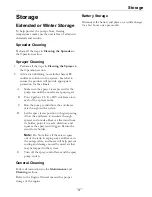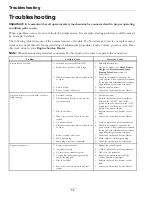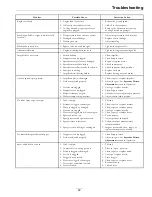
Maintenance
Periodic Maintenance
Check Engine Oil Level
Service Interval: Before each use or daily
1.
Stop engine and wait for all moving parts to stop.
Make sure unit is on a level surface.
2.
Check with engine cold.
3.
Clean area around dipstick. Remove dipstick
and wipe oil off. Reinsert the dipstick according
to the engine manufacturer's recommendations.
Remove the dipstick and read the oil level.
4.
If the oil level is low, wipe off the area around the
oil fill cap, remove cap and fill to the “FULL”
mark on the dipstick. 4-Cycle Engine Oil is
recommended; refer to the Engine Owner's
manual for an appropriate API rating and
viscosity.
Do Not
overfill.
Important:
Do Not operate the engine with the
oil level below the “LOW” (or “ADD”) mark on
the dipstick, or over the “FULL” mark.
Check Battery Charge
Service Interval: Monthly
Allowing batteries to stand for an extended period of
time without recharging them will result in reduced
performance and service life. To preserve optimum
battery performance and life, recharge batteries in
storage when the open circuit voltage drops to 12.4
volts.
Note:
To prevent damage due to freezing, battery
should be fully charged before putting away for
winter storage.
Charge batteries in an open well ventilated area,
away from spark and flames. Unplug charger before
connecting or disconnecting from battery. Wear
protective clothing and use insulated tools.
DANGER
Charging or jump starting the battery may
produce explosive gases. Battery gases can
explode causing serious injury.
•
Keep sparks, flames, or cigarettes away from
battery.
•
Ventilate when charging or using battery in
an enclosed space.
•
Make sure venting path of battery is always
open once battery is filled with acid.
•
Always shield eyes and face from battery.
DANGER
Battery electrolyte contains sulfuric acid, which
is poisonous and can cause severe burns.
Swallowing electrolyte can be fatal or if it touches
skin can cause severe burns.
•
Wear safety glasses to shield eyes, and rubber
gloves to protect skin and clothing when
handling electrolyte.
•
Do Not swallow electrolyte.
•
In the event of an accident, flush with water
and call a doctor immediately.
CAUTION
If the ignition is in the “ON” position there
is potential for sparks and engagement of
components. Sparks could cause an explosion or
moving parts could accidentally engage causing
personal injury.
Be sure ignition switch is in the “OFF” position
before charging the battery.
Check the voltage of the battery with a digital
voltmeter. Locate the voltage reading of the battery in
the table and charge the battery for the recommended
time interval to bring the charge up to a full charge
of 12.6 volts or greater.
Important:
Make sure the negative battery cable
is disconnected and the battery charger used for
charging the battery has an output of 16 volts and
7 amps or less to avoid damaging the battery (see
chart for recommended charger settings).
44

